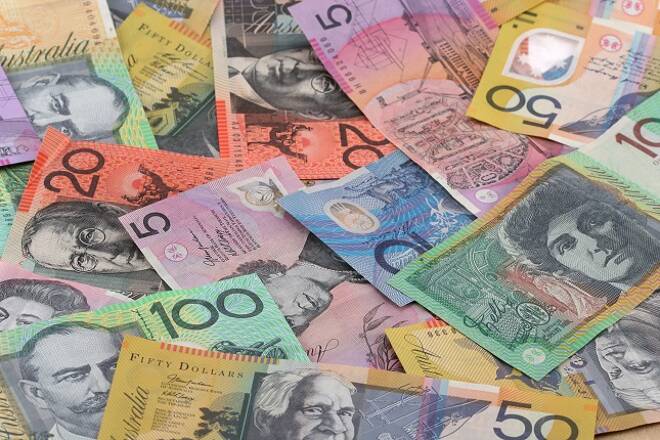Advertisement
Advertisement
2017 AUD/USD Annual Forecast
By:
The last week of the year proved interesting for the AUD/USD because the Forex pair was in a position at one point to close exactly where it ended the
The last week of the year proved interesting for the AUD/USD because the Forex pair was in a position at one point to close exactly where it ended the year in 2015. However, this is essentially meaningless at this point in the game because the pair could easily see more downside in 2017 defending on U.S. inflation and interest rates.
The AUD/USD started the year at .7283 and closed the year at .7201, finishing down -0.0081 or -1.12%.
The Australian Dollar gained against the U.S. Dollar at the start of 2016 when it started to become clear that the Fed would refrain from making its projected rate hikes due to a weakening U.S. economy and global turmoil. Whether it was weakness in China, Brexit or the election, the Fed kept backing off from raising rates until it was forced to do so in December.
While the Fed was debating when to raise rates, the Reserve Bank of Australia started to become concerned about its slowing economy and the value of the currency and its potential negative impact on exports.
The AUD/USD reached its high on April 21 at .7834, about two weeks before it slashed the official interest rate on May 3 to a new historic low of 1.75 percent in order to combat low inflation and stimulate the slow-growing economy.
The RBA was at it again on August 2, cutting its interest rate to another record low of 1.50 percent in a bid to prevent low inflation from choking off the economic recovery amid sluggish wages growth.
Late in the year, it was reported that Australia’s GDP shrank by 0.5% in the September quarter, only the fourth such decline in 25 years. Although most analysts think the GDP will make a recovery in the fourth quarter, helping the country to avoid a recession, there are still some who believe the RBA will have to cut its cash rate at least twice in 2017 to 1%.
Forecast
The Australian Dollar faces a number of downside factors in 2017. These include expectations for higher U.S. inflation and speculation of more easing from the Reserve Bank of Australia (RBA) at a time when the U.S. Federal Reserve could be raising rates as many as three times.
Although the deck seems to be stacked against the Aussie in 2017, we could see pockets of support develop if there is an increases in prices and demand for iron ore, Australia’s best commodity export.
Traders should look forward to a turbulent trade in 2017. The long-term trend at the start of the year for the AUD/USD is bearish, with investors betting heavily that U.S. President-elect Donald Trump will propose a series of inflation-boosting policies – including massive fiscal spending, tax cuts, the elimination of some trade deals and deregulation in certain industries – when he officially takes office on January 20.
Higher U.S. inflation should lead to higher U.S. interest rates from the Federal Reserve, but this is no guarantee. Going into 2016, it projected at least four rate hikes, but delivered only one in December. For 2017, it projects at least three rate hikes.
Rising U.S. rates will continue to tighten the spread between U.S. Treasury Bonds and Australian Government Bonds. The differential will tighten even faster if the Reserve Bank of Australia resumes its easing cycle like some are predicting. This will lead to an even faster demise of the carry trade as investors will rush to get money out of Australia and into U.S. assets.
There is always the possibility the AUD/USD will remain stagnant or even rally if the U.S. economy weakens enough for the Fed to postpone or even eliminate interest rate hikes like it did last year.
Fed Chair Janet Yellen is particularly sensitive to market volatility and she has been known to push for a postponement of a rate hike even when the financial markets are screaming for the Fed to increase rates. Her read of global market volatility will be a wild card throughout the year.
Taking the recent central bank statements at face value, we see can see the RBA cutting rates and the Fed raising rates, a situation that will be bearish for the AUD/USD in 2017.
About the Author
James Hyerczykauthor
James Hyerczyk is a U.S. based seasoned technical analyst and educator with over 40 years of experience in market analysis and trading, specializing in chart patterns and price movement. He is the author of two books on technical analysis and has a background in both futures and stock markets.
Did you find this article useful?
Latest news and analysis
Advertisement
